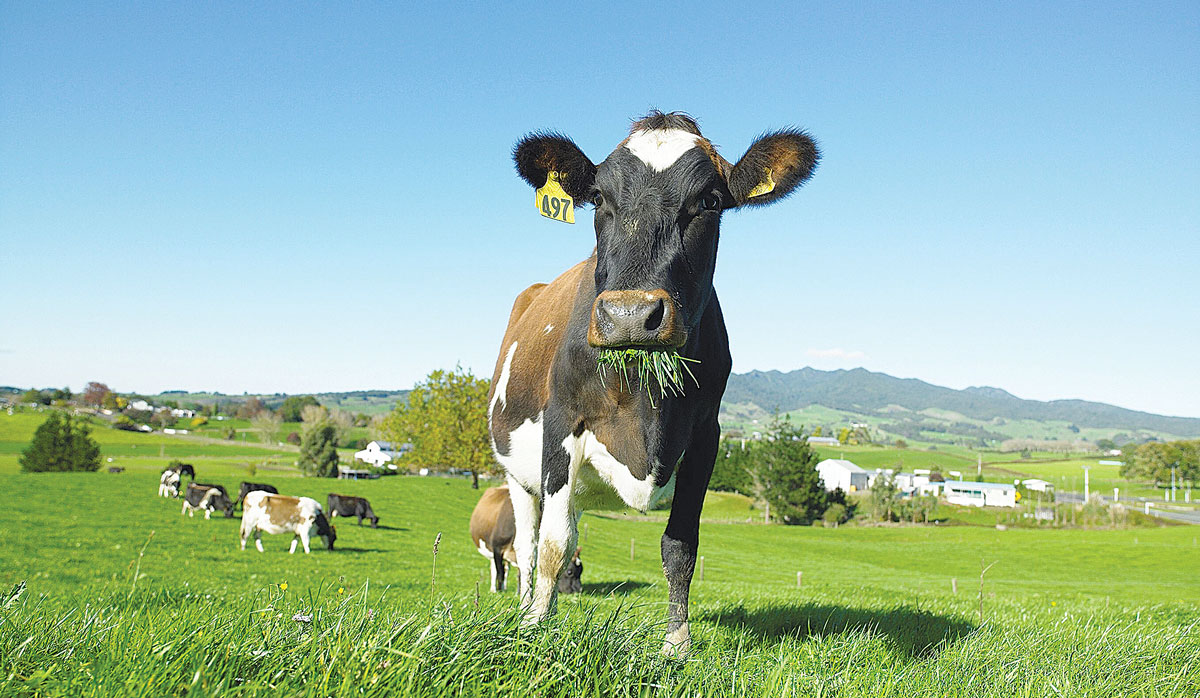Alliance commissions major heat pump system at Mataura, cutting coal use and emissions
Alliance Group has commissioned a new heat pump system at its Mataura processing plant in Southland.
New research by Waikato-based consultants suggests dairy farmers don’t need blunt tools proposed in the Government’s agricultural emissions proposal to meet climate change targets.
Instead, Headlands Consulting claims its modelling shows better outcomes in terms of reductions in the carbon footprint of milk, greenhouse gas (GHG) emissions, nitrogen leaching, dairy cow numbers and land used, while maintaining total milk production and increasing on-farm profit.
Managing director Warren Morritt says farmers can achieve all this while remaining within Fonterra’s pasturebased milk criteria.
This research shows that with systematic refinements and inclusion of a moderate amount of concentrate feeds to fewer, but better cows, the total amount of feed required per farm reduces dramatically. However, total milk production per farm is retained, increasing feed conversion efficiency.
Under the Government’s proposed GHG calculator, the main lever left available to farmers is to reduce total milk production. Morritt says this completely ignores any potential gains to be made out of increasing feed conversion efficiency.
“Our modelling research clearly shows that the dairy sector can build a system that achieves and exceeds the 2030 climate change and greenhouse gas targets, while improving animal welfare and ensuring we don’t compromise on profitability and total production,” he explains.
“It’s not often you find a silver bullet, but our modelling research proves that with a combination of systematic refinements that are currently within farmers’ control, we can find answers that are good for the planet, the economy and every New Zealander.”
Headlands Consulting’s modelling research used the Waikato ‘average’ farm from DairyNZ statistics 2018-19 season as the basis for the comparison and modelled five scenarios against this ‘control farm’.
The scenario with the greatest environmental benefit shows that dairy farmers can continue to achieve the same total farm milk production levels, with a 36% reduction in cow numbers per hectare, coupled with 8.5% of dairy farm land being retired for alternative use, delivering a 22% increase in operating profit.
The reduction in total GHG emissions (15.6%) exceeds the Government’s emissions reduction targets for 2030 (10%), while there is also a strong reduction in nitrogen leaching (15.5%) in this system compared to the control scenario. Greenhouse gas emissions associated with growing and sourcing off-farm supplement was accounted for in the modelling.
Morritt says recent industry recommendations include scenarios where cows per hectare are reduced by 15% with limited option to utilise supplemental feeds. When modelled, these recommendations did result in a reduction in total farm GHG emissions (14.4%) and N leaching (9.7%) compared with the control farm.
also a severe reduction in milk production (11%) and profitability (7.4%), while having minimal impact on the carbon footprint of the end products (3.9% improvement).
 |
|---|
|
Morritt says research carried out by his consultancy suggests dairy farmers don't need the blunt tools proposed in the Government's agricultural emissions proposal to meet climate change targets. |
By comparison, Headlands’ optimised modelling showed a scenario which could achieve a similar total farm GHG reduction (15.6%) but with maintained milk production, and increased profitability by 22% compared to the control farm – all the while reducing the carbon footprint of the end product by 15.7%.
Morritt says the key to reducing greenhouse gas emissions at the dairy farm level, and per unit of product produced, is by producing milk more efficiently, and this requires increasing feed conversion efficiency.
Supplementing the cow’s diet with concentrates is a critical tool to achieving this feed conversion efficiency that enables each cow to consume more feed and nutrients in total, channelling a much higher proportion of feed energy towards milk production, he says.
“This in turn allows a much lower number of cows per hectare while maintaining farm production levels.”
Legal controls on the movement of fruits and vegetables are now in place in Auckland’s Mt Roskill suburb, says Biosecurity New Zealand Commissioner North Mike Inglis.
Arable growers worried that some weeds in their crops may have developed herbicide resistance can now get the suspected plants tested for free.
Fruit growers and exporters are worried following the discovery of a male Queensland fruit fly in Auckland this week.
Dairy prices have jumped in the overnight Global Dairy Trade (GDT) auction, breaking a five-month negative streak.
Alliance Group chief executive Willie Wiese is leaving the company after three years in the role.
A booklet produced in 2025 by the Rotoiti 15 trust, Department of Conservation and Scion – now part of the Bioeconomy Science Institute – aims to help people identify insect pests and diseases.

OPINION: The release of the Natural Environment Bill and Planning Bill to replace the Resource Management Act is a red-letter day…
OPINION: Federated Farmers has launched a new campaign, swapping ‘The Twelve Days of Christmas’ for ‘The Twelve Pests of Christmas’ to…